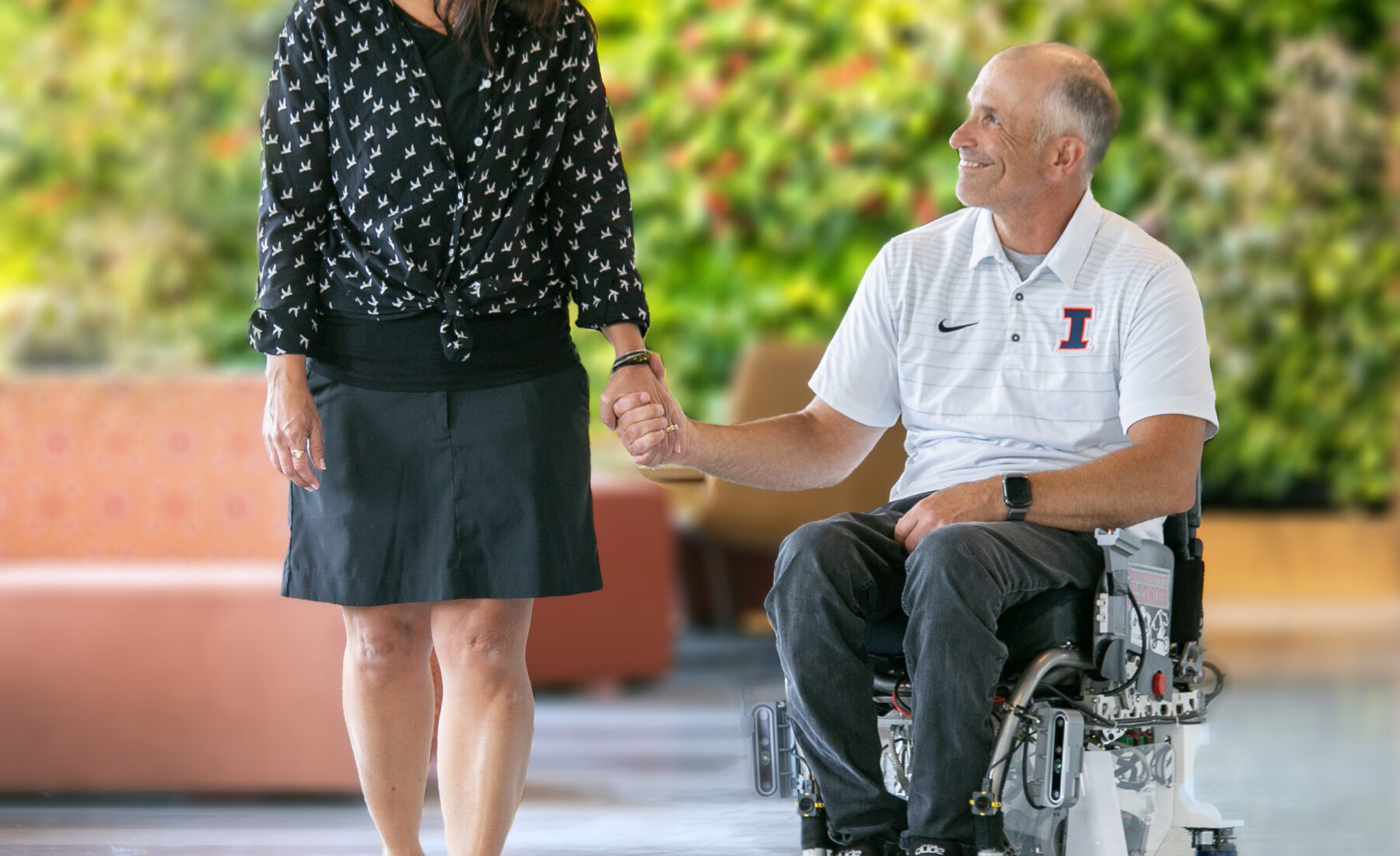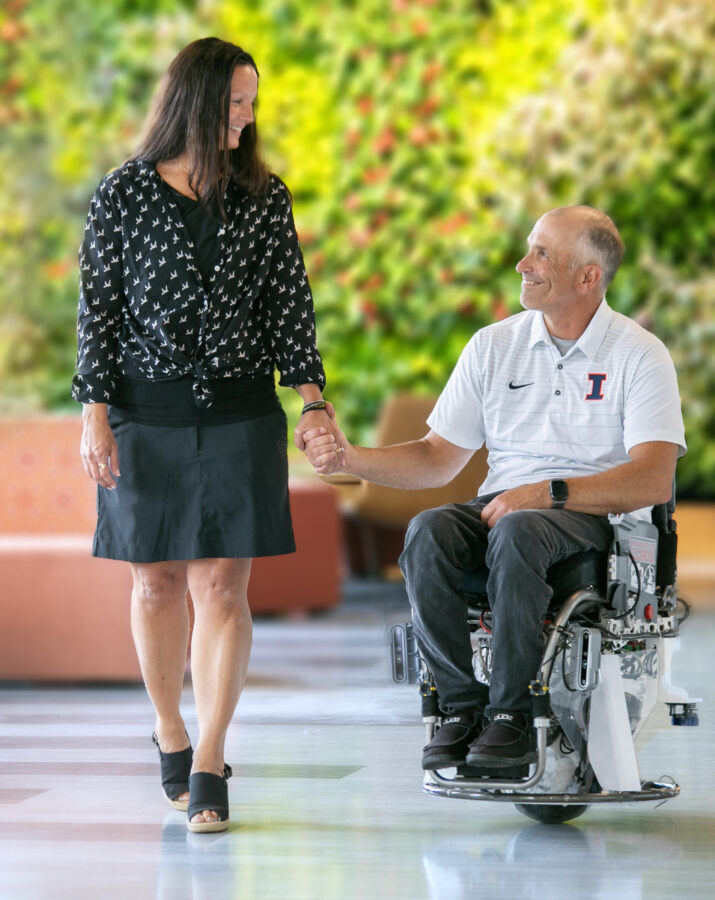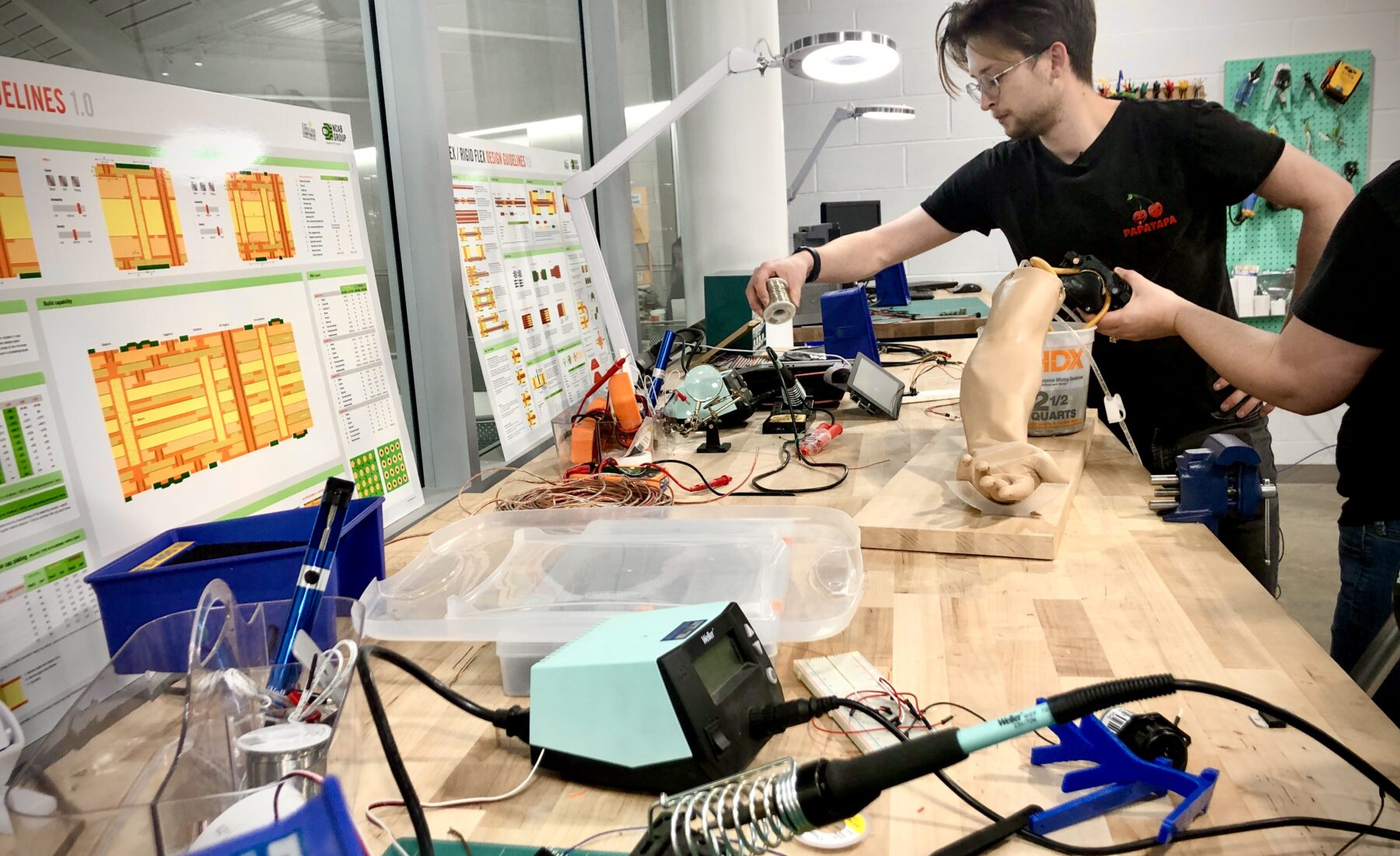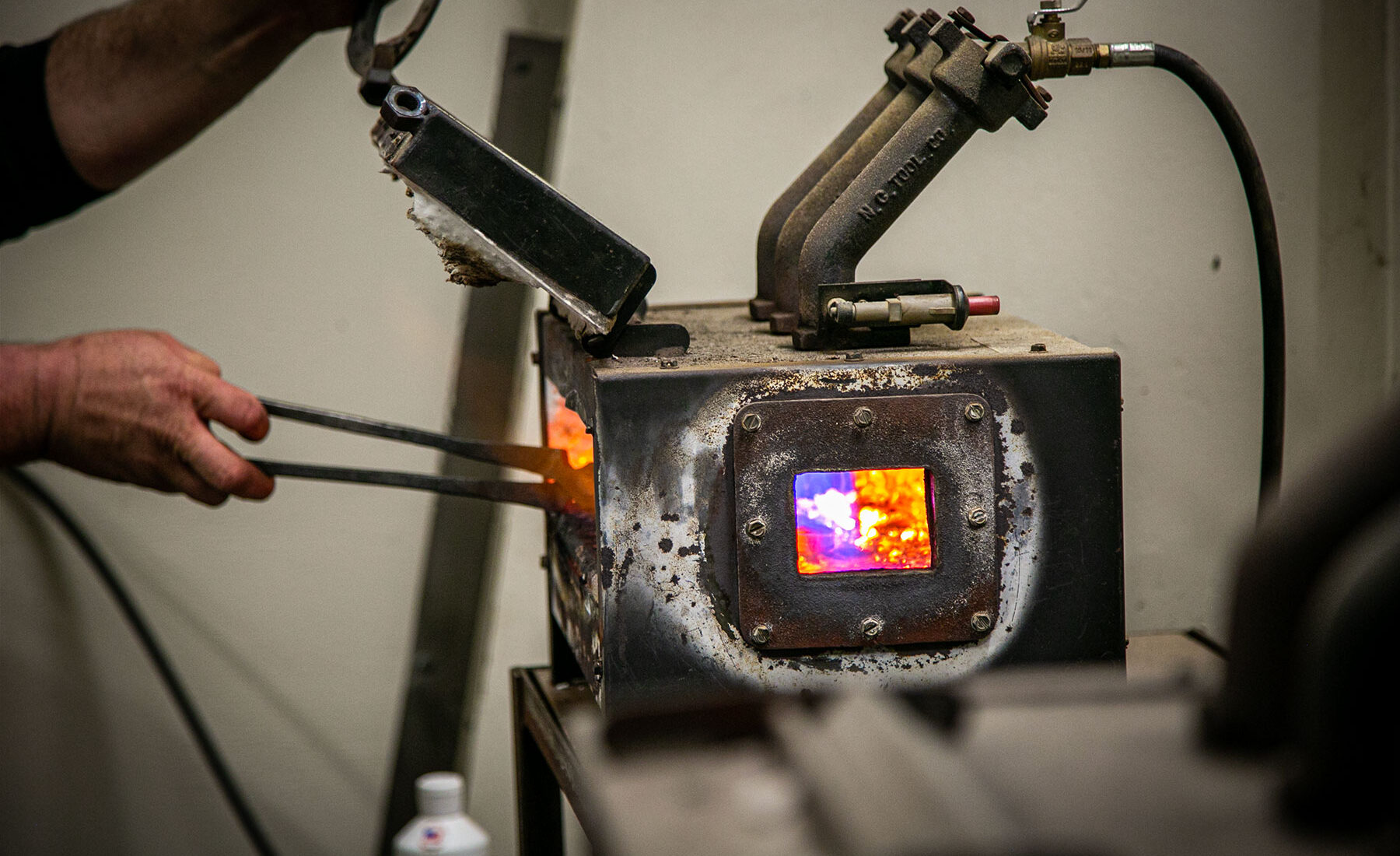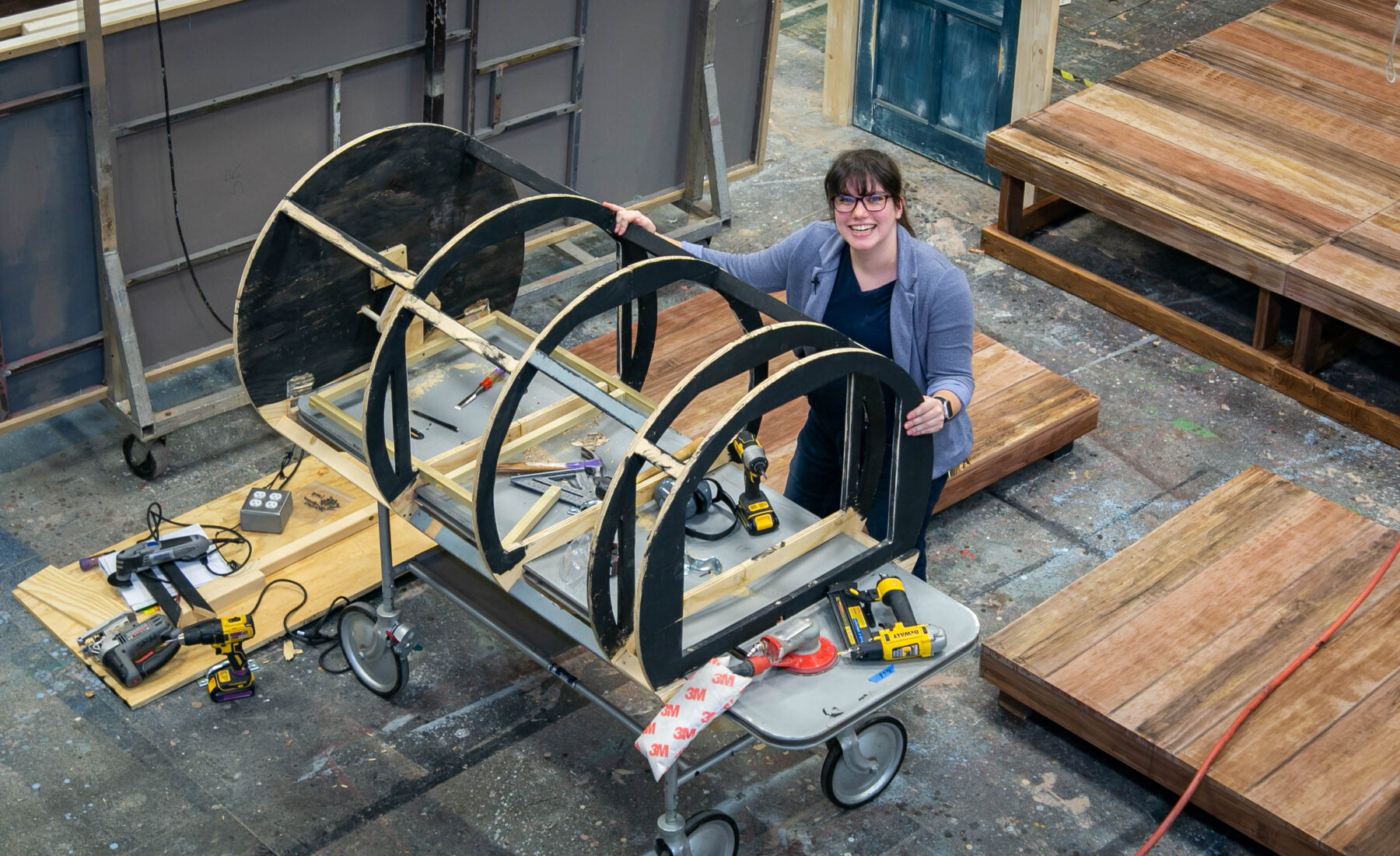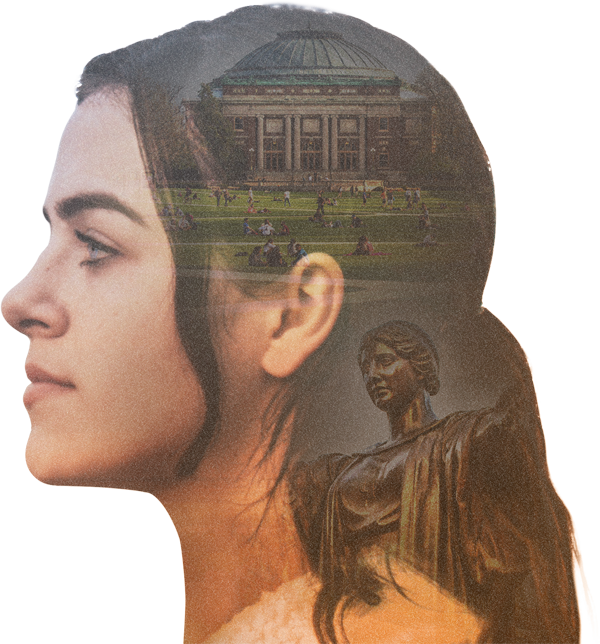On the second floor of the Sidney Lu Mechanical Engineering Building, Adam Bleakney (LAS ’00, MEDIA ’02), using the strength and dexterity in just his upper body, adjusts himself on his chair while lab members look on. The chair, balancing on a six-pound, former bowling ball, functions like no other in the world and is the brainchild of Bleakney, head coach of the Illinois Wheelchair Track and Road-racing team.
While the design for wheelchairs has not changed much since the first patent in the 1800s, Bleakney knew if he wanted a better one, he’d have to create it himself. “I wanted to liberate the hands from having to push wheels,” Bleakney said. “The act of pushing a manual wheelchair prevents the hands from engaging in other more meaningful activities while moving, such as holding hands with a loved one on a walk, carrying a cup of coffee, or holding a toddler while moving around the house.”
Bleakney sketched out his vision—a chair on top of a Segway, the two-wheel, self-balancing transportation device, and with his rudimentary drawings, he assembled a team from units throughout campus. He chose engineers, designers, and scientists to bring their expertise to the project, while keeping the end user in the foreground.

Several years later, the team received a $1.5 million grant from the National Science Foundation (NSF) to support its work. Now the project has a working prototype and a patent pending.
ENGINEERING MOBILITY
The project started over five years ago, when members from The Grainger College of Engineering, College of Fine and Applied Arts, Carle Illinois College of Medicine, College of Applied Health Sciences, and the Beckman Institute for Advanced Science and Technology came together. The team created a first-generation prototype and flew to London to present their idea at the Toyota Mobility Unlimited Challenge.
While they did not win the competition, they were undeterred, continuing with the project and ultimately winning the NSF grant in 2020. Their second-generation prototype can support roughly 60 kilograms (130 pounds), move up to five miles per hour, and brake quickly. The chair is only about as wide as the user’s hips and as high as a standard table chair, creating a significantly smaller footprint than powered or manual wheelchairs.
During the design phase, principal investigator Elizabeth T. Hsiao-Wecksler, a professor of mechanical engineering and interim director of Grainger’s Health Care Engineering Systems Center, said the team found inspiration in a surprising place.
“At the time, the new Star Wars movie came out, and after seeing BB-8, the spherical droid character, we thought maybe we could make a device that rides on a ball,” Hsiao-Wecksler said.
The team ended up building upon a piece of technology developed at Carnegie Mellon University called a ballbot, a dynamically stable, ball-based robot. The chair then uses an omniwheel system to drive and control the ball. The team called it PURE (Personalized Unique Rolling Experience).

PURE automatically transitions among three driving behaviors. Steer and spin are similar to a typical wheelchair, where the user can steer forward, backward, or spin in place by leaning in different directions. Slide is unique and allows the user to move laterally, like in an office chair. To accommodate for limited torso range of motion of some users, PURE uses sensors to estimate leaning and twisting motions, and amplifies these signals to control the ballbot’s direction and speed.
“We did a lot of thinking about the construction of the ball, like what the material would be and what it would be covered with,” Hsiao-Wecksler said. “We ended up using a lightweight bowling ball and covering it with TPU, or plastic. By adding plastic, we get a little bit of added friction because we don’t want it slippy like a normal bowling ball would be.”
MOVING FORWARD
While developing their prototype, the engineering team designed a virtual-reality simulation to test controls and train users. They also created a virtual obstacle course to help users practice. The sensitivity of the ballbot’s controls can also be modified for first-time users to help them adjust to the system.
This past summer, ten non-disabled people and ten manual wheelchair users tested the second-generation prototype in Grainger’s Center for Autonomy’s highbay testing area, which provided enough space to set up various courses to see how well participants could control PURE, including turning around in a simulated restroom stall and navigating tight corners.
Paralympian Jean Driscoll (LAS ’91, AHS ’93) demonstrated PURE at an open house. “She hopped into the prototype and started driving it right away,”Hsiao-Wecksler said. “It behaved exactly as we were intending, in that you could just sit in it, feel the organic motion, and drive it with your body.”
Despite reaching an impressive milestone, the team is looking forward to improving the device. Among other things, they are now working on advanced driverassistance using a machine-learning vision system for path-keeping, collision avoidance, and autonomous controlled stopping. Future PURE prototypes will be able to interpret both user input and obstacle detection to guide the user safely.

“This project is a great example of what happens when you bring engineering, research, design, and an assisted technology to life where function and the emotional needs of users are so intertwined,” said Deana McDonagh, who holds appointments in the School of Art and Design and Carle Illinois College of Medicine. “The technology takes second place. The person comes first.”
As the years have gone by and the project has progressed, Bleakney will never forget the first time he held his wife’s hand while moving about the lab on the prototype.
“I was amazed that I was using something that started out as just a little sketch I drew on a piece of scrap paper,” Bleakney said. “I wanted to make it, and with the efforts of these incredibly talented engineers and designers, we did.”
✦ ✦ ✦
The PURE project’s multidisciplinary team includes faculty and staff from The Grainger College of Engineering, College of Fine and Applied Arts, Carle Illinois College of Medicine, College of Applied Health Sciences, and the Beckman Institute for Advanced Science and Technology including, co-PI Clinical Associate Professor Bob Norris in the Department of Industrial and Enterprise Systems Engineering; Assistant Professor João Ramos in the Department of Mechanical Science and Engineering; Dr. Jeannette Elliott, head physical therapist at Disability Recourses and Educational Services (DRES); Dr. Pat Malik, retired director of DRES; and numerous graduate and undergraduate students from across campus.
This story was published .